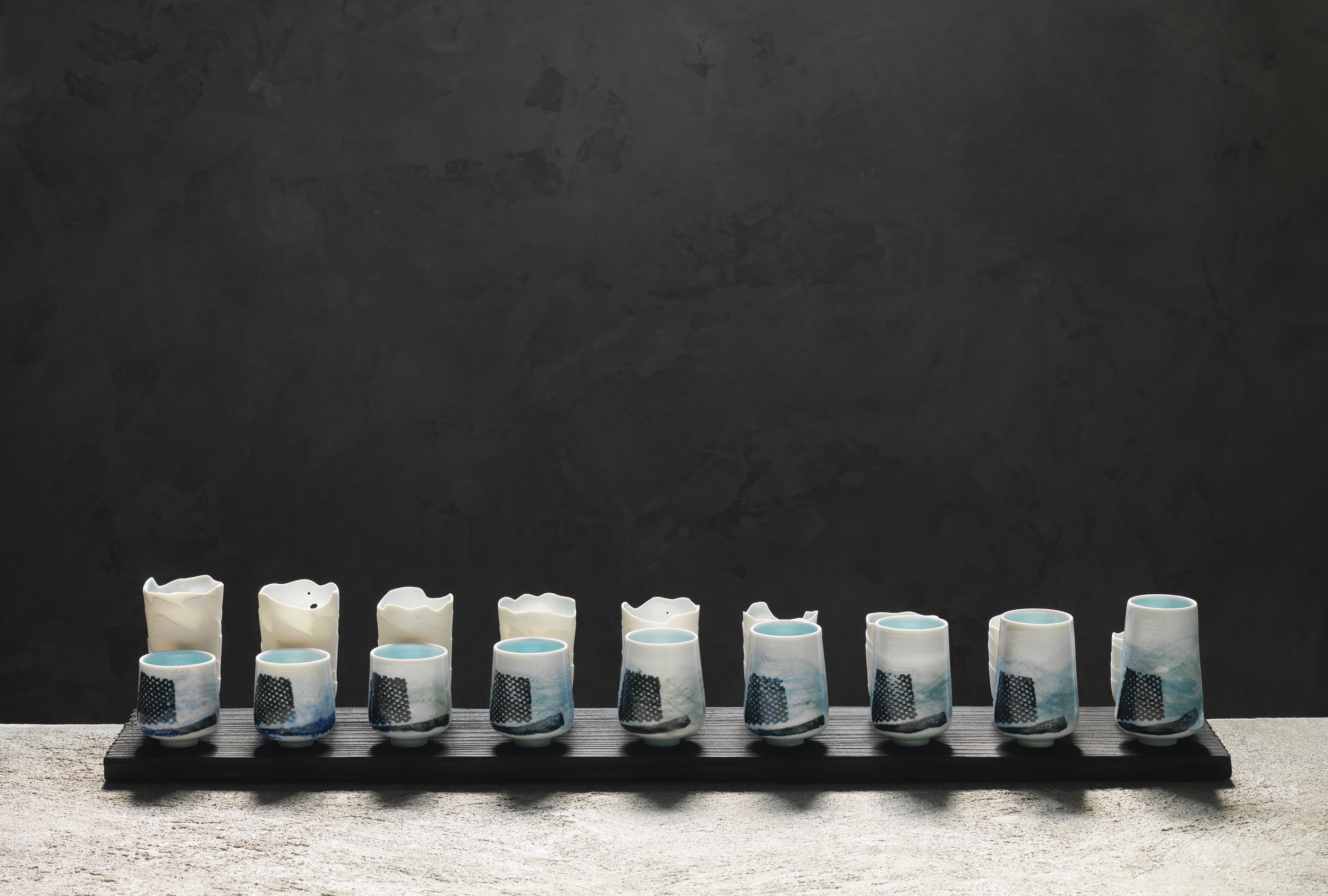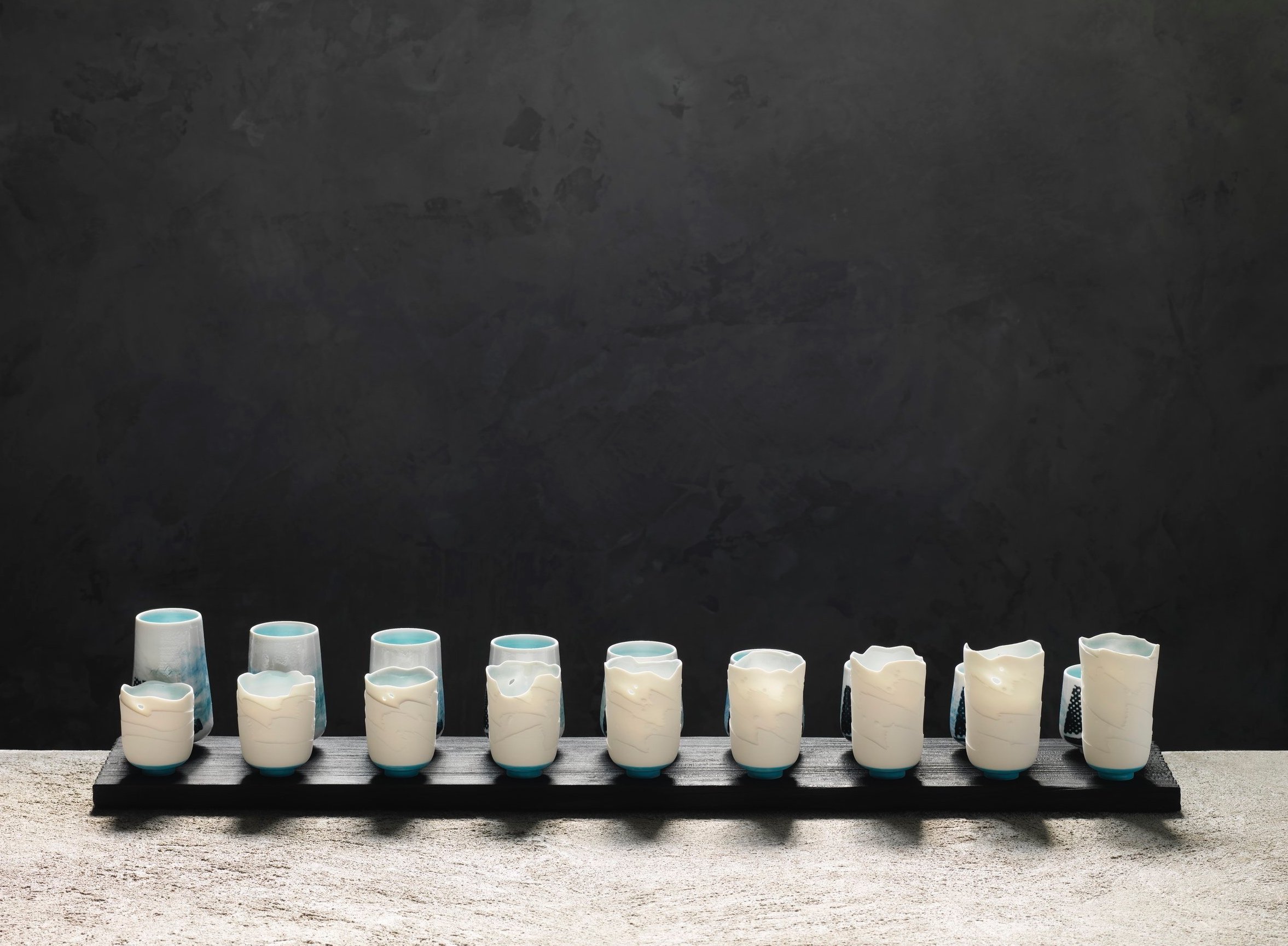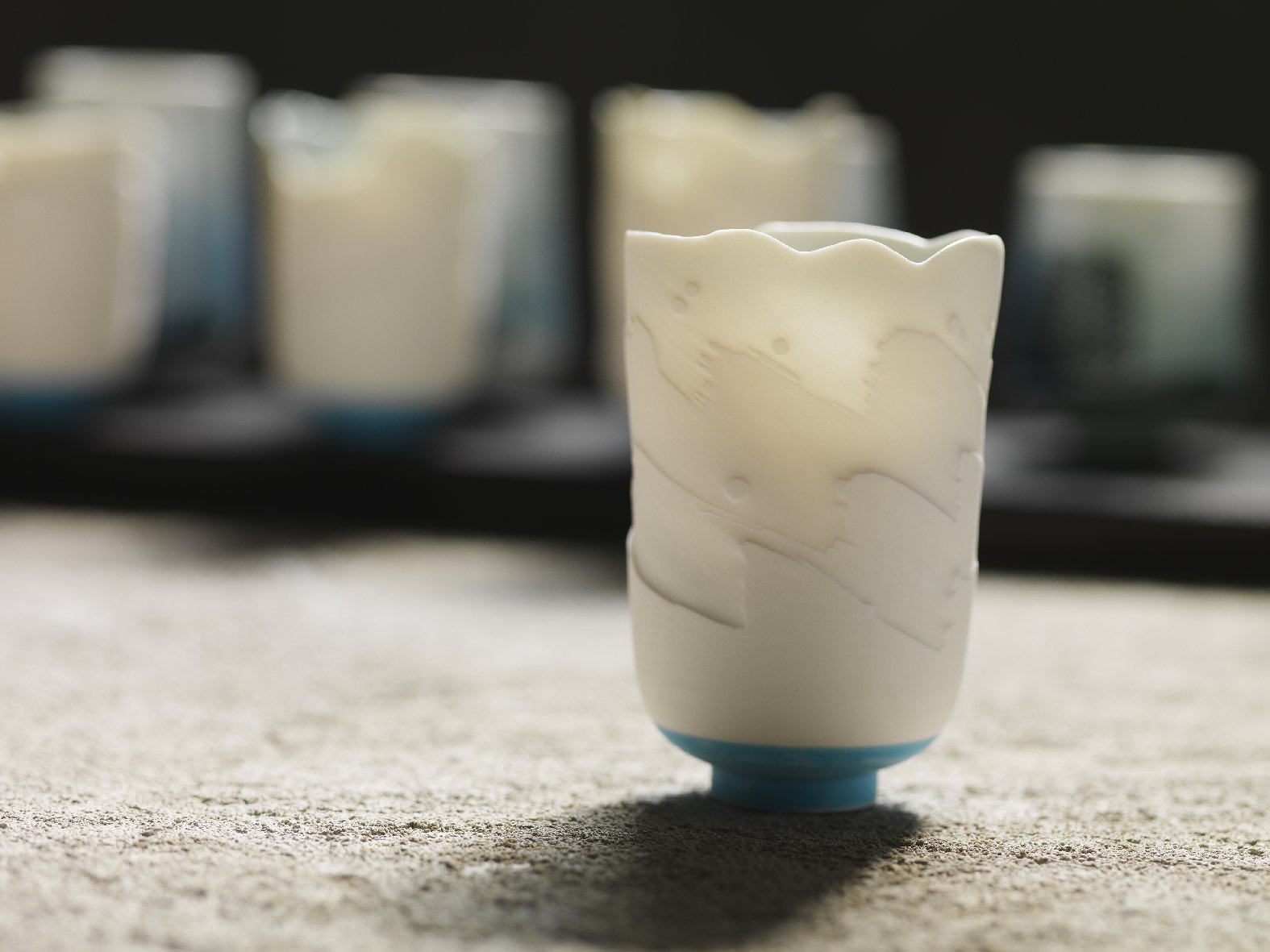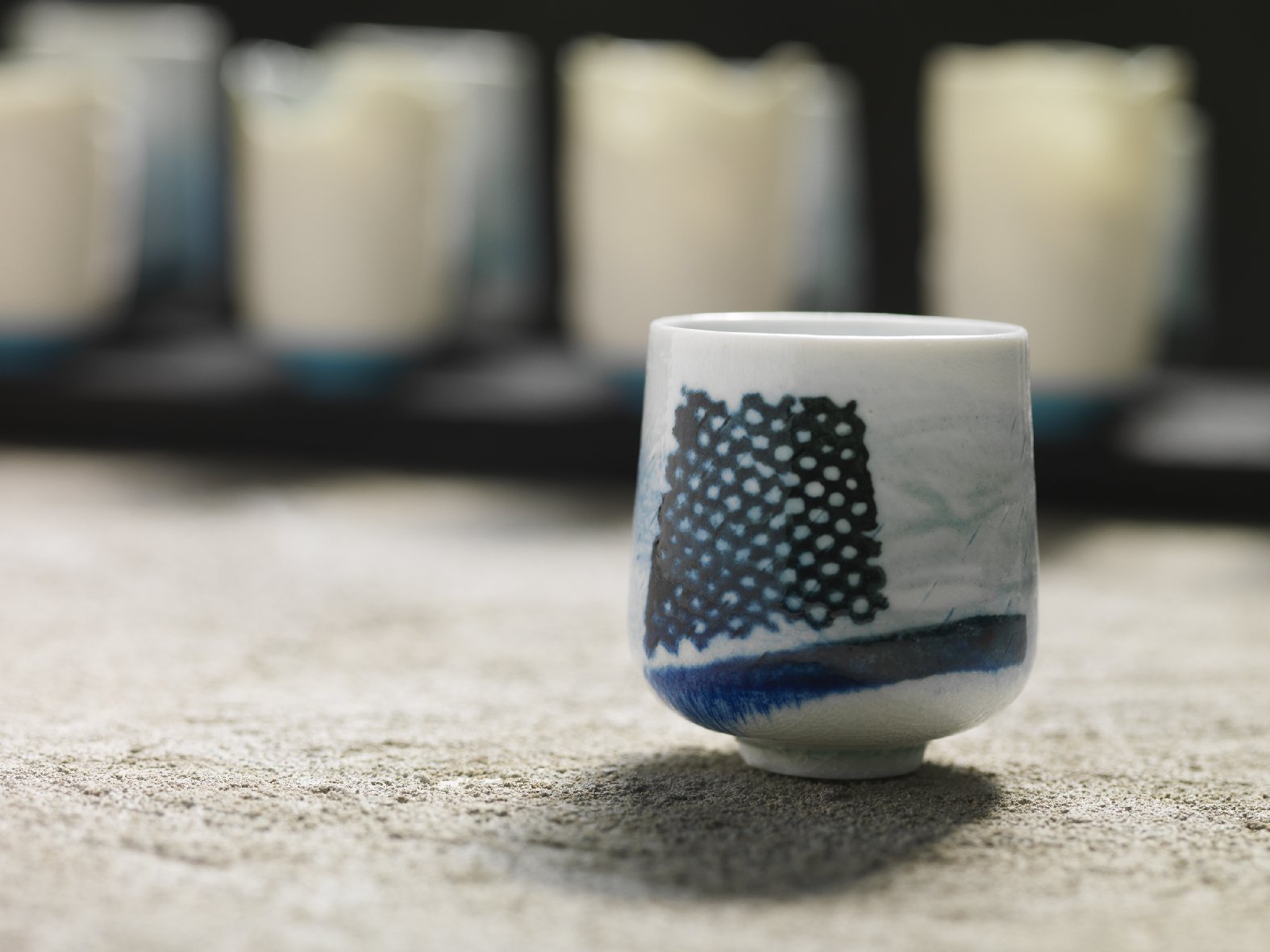The Rising Sea
ABERDEEN ART GALLERY MICRO COMMISSION
A piece addressing climate change and how it affects places that are of such importance to so many of us, in particular those living by the coast. Coastal communities (those who live within 5km of the coast) make up 41% of the total Scottish population. Erosion of the Scottish coast has doubled in the last 40 years. Global warming and the resulting rising sea levels have caused significant coastal erosion, more frequent storm events, and increased rainfall and flooding. We have witnessed these effects locally, in particular at Aberdeen, Balmedie and Stonehaven beaches.
Two rows of opposing porcelain forms displayed on a wooden plinth.
The vessel form is used as reference to mankind’s relationship with the coast and our responsibility for climate change, whilst the repeated forms are reminiscent of groynes and other coastal defences. The pieces are made from 100% recycled porcelain (reclaimed trimmings and waste from making previous pots) and are eroded using processes involving salt, water and heat.
The first row depicts rising sea levels with water etched pieces increasing in size. The decoration is made in response to the work of Frances Walker in the Gallery’s collection – precise, engraved, wavelike forms with layered turquoise and grey liner glazes reminiscent of the isolated west coast beaches that Walker often portrays.
Water etching: sponging away the surface and edges of pieces done whilst the pots are unfired. A technique that is used to create subtle marks, reliefs and textures on the surface, or create a fine, organic and undulating rim.
The second row depicts erosion of the coast with salt glazed pieces decreasing in size. The mark making is a response to the work of Joan Eardley in the Gallery’s collection – loose, expressive brushstrokes (barely visible post firing), and reference to Catterline’s Kale Tap and harbour wall which often feature in her paintings. The marks are made with sheep’s wool, netting and foam found on Scottish beaches.
Soda firing: a process involving introducing sodium (salt) into a gas or wood fired kiln towards the end of firing. The vapour produced combines with silica in the clay to create a glaze on the surface of the pieces, sometimes trapping carbon in the process. The soda also affects the stains and oxides used for decoration – they volatilise causing some of the marks to erode, whilst the lack of oxygen (reduction) makes some colours change. The insides and footrings were originally green, but have changed to turquoise as if the land has turned to sea.
The plinth is made from charred Scottish larch.
Shou sugi ban: an ancient Japanese method of preserving wood using burning. It also reveals the beauty and texture of the grain.




